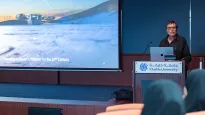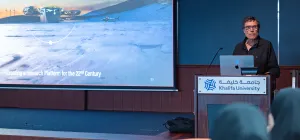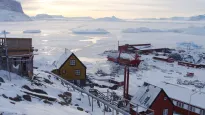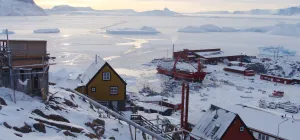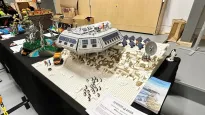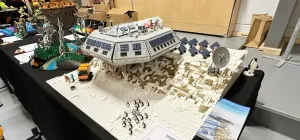Protecting Antarctica’s Oceans

The International Polar Foundation is pleased to announce its membership of the Antarctic Ocean Alliance, a coalition that has identified 19 key areas that warrant protection as a network of designated, no-take marine reserves that would cover 40% of Antarctica’s Southern Ocean.
These reserves would be world’s most comprehensive protection regime, and would protect Antarctic habitats and wildlife from industrial development.
Nearly 60,000 people worldwide have also “joined the watch”, along businessman Richard Branson, actors Ed Norton and Ted Danson and oceanographer Sylvia Earle. They’re all keeping an eye on the future of Antarctica's ocean, soon to be decided by representatives of the members of the Commission on the Conservation of Antarctic Marine Living Resources (CCAMLR – 24 countries, plus the European Union).
CCAMLR’s timeframe for putting in place a representative system of marine protected areas in the oceans around Antarctica by this year. The Antarctic Ocean Alliance is working to ensure CCAMLR successfully meets its commitments, and creates a legacy for future generations.
Joining the Alliance is a natural step for the Foundation, which operates the world’s first Zero Emission polar research base, Princess Elisabeth Antarctica, 200km inland from the Antarctic coast. Scientific research in the Polar Regions is essential to increasing our understanding the Earth, its history, regional ecosystems, and the workings of the global climate system. Princess Elisabeth Antarctica welcomes scientists from all over the world,who come to carry out research work in Antarctica, including studies of the Earth’s climate mechanisms and ice caps, and how they relate to interconnected systems, such as the oceans.
The Foundation believes that Antarctica, and the waters surrounding it, should be continue devoted to peace and science, and we support polar scientific research for the advancement of knowledge, the promotion of informed action on climate change, and the development of a sustainable society.
Oceans cover 70% of the planet – but only 1% is protected from development. The Southern Ocean makes up 10% of the world's seas, is still relatively untouched by human activity and is home to unique and diverse species, such as Adelié and emperor penguins, Antarctic petrels and minke whales, Ross Sea killer whales, colossal squid and Weddell seals, which all thrive in the rich food web, of which krill is a major component.
While the ice-covered Antarctic continent is under protection - in 1991, the international community made a courageous decision, under the Madrid Protocol, also known as the Antarctic-Environmental Protocol, to protect the Antarctic as a natural reserve for peace and science – this doesn’t extend to the marine environment.
The 1982 Convention on the Conservation of Antarctic Marine Living Resources was negotiated with a mandate to conserve and manage Antarctic living resources, but the tools available under it have yet to be effectively applied to protect the region’s oceans. Because of this, areas like the Ross Sea – the most intact marine ecosystem on the planet – are still vulnerable to exploitation. Important research work continues to be carried out in the Ross Sea, such as the recent ANDRILL project, which drills deep into Antarctic sediment to reveal past glacial history and to predict the Earth's future.
The Antarctic Ocean Alliance is calling on CCAMLR to establish a fully protected marine reserve of approximately 3.6 million square kilometers in the Ross Sea region as a first step towards establishing a comprehensive network of marine reserves and marine protected areas around Antarctica.
To find out more, and how to get involved, visit www.antarcticocean.org or check out their video explaining the work they do.
Download
















